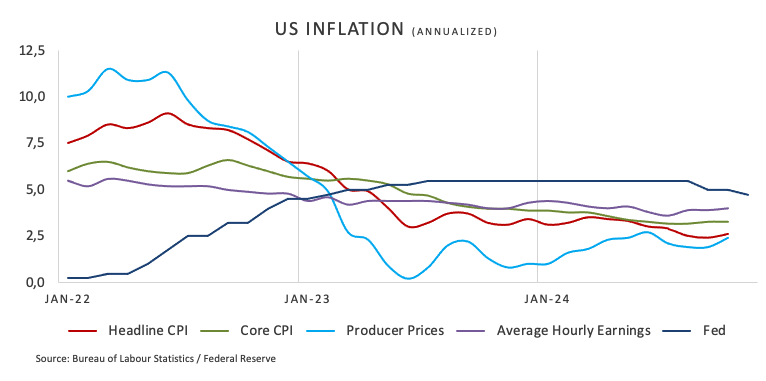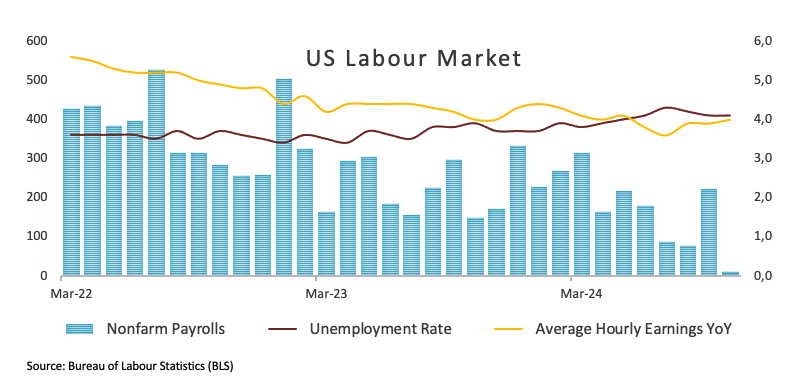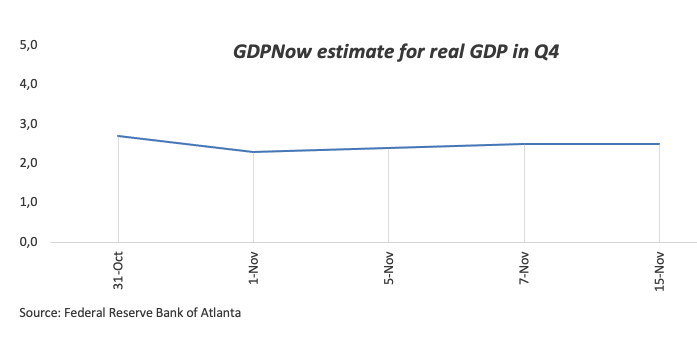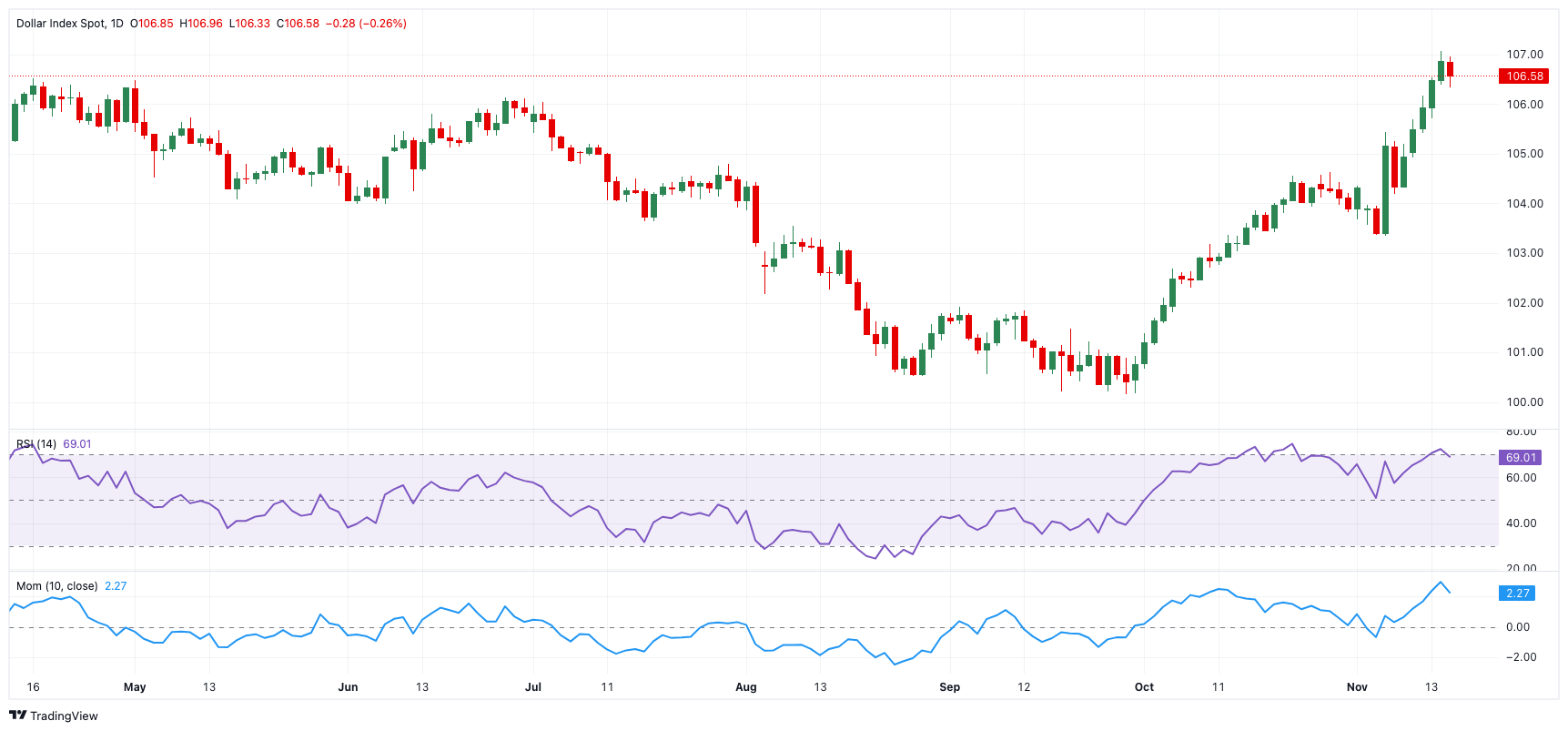- The US Dollar Index clinches its seventh weekly gain in a row.
- Trump secured the House of Representatives, reaching a ‘Red Sweep’.
- The US Dollar’s gains were largely propped up by the ‘Trump trade’.
The US Dollar (USD) has been on a strong run for yet another week, continuing its impressive streak and now marking seven consecutive weeks of gains. The Greenback even broke past the key 107.00 barrier when measured by the US Dollar Index (DXY), hitting a new YTD top and putting further distance from the recently broken 200-day Simple Moving Average (SMA) at 103.90.
The Greenback’s rally began in early October, fueled by solid economic data from the US and, more recently, a boost from the so-called “Trump trade”. This was combined with the more prudent approach from the Federal Reserve (Fed) when it came to evaluate the next move on interest rates.
Trump’s policies now come to the fore
Following the widely anticipated quarter-point interest rate reduction by the Fed last week, October’s inflation figures tracked by the Consumer Price Index (CPI) might have not moved the dial regarding the Fed’s easing plans for the next couple of months as investors continue to price in another 25-basis-point rate cut at the December 18 gathering.
However, Trump’s “Red Sweep” might.
It is vox populi President-elect Trump’s favourite policy to implement tariffs on Chinese and European imports, ranging from 10% to 60%, and even 100% for Chinese electric vehicles coming south of the Rio Grande.
In addition, fiscal policy under the Trump administration is expected to become more “accommodative”, while deregulatory measures in the corporate universe are also well on the table.
All the above points to the most likely return of inflationary pressure in the US economy sooner rather than later, which carries the potential to derail the Fed’s intentions to ease its monetary policy further, or even considering the likelihood of rate hikes in case of need.
The Fed’s cautious message: Another excuse for the Dollar’s rally
In his latest comments at an event in Dallas, Chair Jerome Powell argued that the strong economic growth, resilient job market, and persistent inflation above the 2% target mean the Fed can afford to be patient with interest rate cuts. He also emphasised that the pace of cuts is not predetermined and that current economic conditions do not indicate urgency for rate reductions. Powell also mentioned that the Fed has time to adjust its policy approach if needed, especially considering the return of Donald Trump as president.
Aligning behind his remarks, Dallas Fed President Lorie Logan advised caution on future rate cuts, stressing the importance of not reigniting inflation. She pointed to potential risks such as increased business investment post-election and strong consumer spending. Logan also observed that while the labor market seems to be cooling, the current 4.1% Unemployment Rate indicates there has been no major weakening so far.
And finally: US fundamentals do rock
With the Fed now shifting its focus from inflation to take a closer look at the job market, the overall health of the US economy is becoming a major factor in shaping future policy decisions.
In October, the Nonfarm Payrolls report showed a modest increase of just 12K jobs, while the Unemployment Rate held steady at 4.1%. Although the ADP report came in better than expected, weekly jobless claims have been suggesting the labour market is still strong, even if it’s cooling down very slowly.
Recent GDP figures have also been surprisingly positive, easing concerns about an imminent recession. Right now, neither a soft nor a hard landing looks likely.
Compared to other G10 economies, the US is standing out, which could help keep the US Dollar relatively strong over the medium to long term.
Rate hikes and cuts: A global snapshot
The Eurozone, Japan, Switzerland, and the UK are all facing deflationary pressure and increasingly unpredictable economic activity.
In response, the European Central Bank (ECB) lowered interest rates by 25 basis points on October 17 but gave little indication about its next moves, leaving it all to its “data dependent” stance.
Similarly, the Swiss National Bank (SNB) trimmed its rates by 25 basis points on September 26.
The Bank of England (BoE) also reduced its policy rate by 25 basis points to 4.75% earlier in the month. However, the BoE remains cautious, as it expects the new budget to boost both growth and inflation, making it unlikely to lower rates aggressively. Nonetheless, the central bank anticipates inflation to stabilize by the end of 2025.
Meanwhile, the Reserve Bank of Australia (RBA) decided to keep rates unchanged at its November 5 meeting, maintaining its usual cautious stance. Markets are now expecting a possible rate cut by May 2025.
In Japan, the Bank of Japan (BoJ) stuck with its accommodative policy during the October 31 meeting. Markets are only anticipating a modest 45-basis-point tightening in the next 12 months.
What’s up next week?
Key US inflation figures are already out of the way, although market participants are expected to closely follow other measures of the real economy, such as the advanced S&P Global Manufacturing and Services PMIs and the usual weekly report on Initial Jobless Claims.
In addition, the release of the Philadelphia Fed Manufacturing Index and the final Michigan Consumer Sentiment print should also maintain the focus on the health of the US economy.
Techs on the US Dollar Index
The US Dollar Index (DXY) is steadily climbing, with the next key target being the recent high just above the 107.00 barrier on November 14, followed by the November 2023 top of 107.11 (November 1), and the 2023 peak of 107.34 (October 3).
On the flip side, if the DXY starts to pull back, the first support level is the critical 200-day SMA at 103.90, which precedes the November low of 103.37 (November 5). Below that, the 100-day and 55-day SMAs sit at 103.10 and 102.82, respectively. A deeper drop could bring the index closer to the 2024 bottom of 100.15 (September 27).
Meanwhile, the Relative Strength Index (RSI) remains in the oversbought zone just above the 70 yardstick, which could be a harbinger of a potential short-term corrective move. Meanwhile, the Average Directional Index (ADX) has regained impetus and advanced past 45, labelling the current uptrend in the index as quite strong.
US Dollar PRICE Today
The table below shows the percentage change of US Dollar (USD) against listed major currencies today. US Dollar was the strongest against the British Pound.
| USD | EUR | GBP | JPY | CAD | AUD | NZD | CHF | |
|---|---|---|---|---|---|---|---|---|
| USD | -0.25% | 0.26% | -1.40% | 0.12% | -0.21% | -0.34% | -0.50% | |
| EUR | 0.25% | 0.51% | -1.17% | 0.38% | 0.04% | -0.11% | -0.25% | |
| GBP | -0.26% | -0.51% | -1.69% | -0.12% | -0.46% | -0.62% | -0.75% | |
| JPY | 1.40% | 1.17% | 1.69% | 1.60% | 1.24% | 1.08% | 0.94% | |
| CAD | -0.12% | -0.38% | 0.12% | -1.60% | -0.35% | -0.48% | -0.63% | |
| AUD | 0.21% | -0.04% | 0.46% | -1.24% | 0.35% | -0.14% | -0.30% | |
| NZD | 0.34% | 0.11% | 0.62% | -1.08% | 0.48% | 0.14% | -0.15% | |
| CHF | 0.50% | 0.25% | 0.75% | -0.94% | 0.63% | 0.30% | 0.15% |
The heat map shows percentage changes of major currencies against each other. The base currency is picked from the left column, while the quote currency is picked from the top row. For example, if you pick the US Dollar from the left column and move along the horizontal line to the Japanese Yen, the percentage change displayed in the box will represent USD (base)/JPY (quote).
Information on these pages contains forward-looking statements that involve risks and uncertainties. Markets and instruments profiled on this page are for informational purposes only and should not in any way come across as a recommendation to buy or sell in these assets. You should do your own thorough research before making any investment decisions. FXStreet does not in any way guarantee that this information is free from mistakes, errors, or material misstatements. It also does not guarantee that this information is of a timely nature. Investing in Open Markets involves a great deal of risk, including the loss of all or a portion of your investment, as well as emotional distress. All risks, losses and costs associated with investing, including total loss of principal, are your responsibility. The views and opinions expressed in this article are those of the authors and do not necessarily reflect the official policy or position of FXStreet nor its advertisers. The author will not be held responsible for information that is found at the end of links posted on this page.
If not otherwise explicitly mentioned in the body of the article, at the time of writing, the author has no position in any stock mentioned in this article and no business relationship with any company mentioned. The author has not received compensation for writing this article, other than from FXStreet.
FXStreet and the author do not provide personalized recommendations. The author makes no representations as to the accuracy, completeness, or suitability of this information. FXStreet and the author will not be liable for any errors, omissions or any losses, injuries or damages arising from this information and its display or use. Errors and omissions excepted.
The author and FXStreet are not registered investment advisors and nothing in this article is intended to be investment advice.
Recommended Content
Editors’ Picks

EUR/USD accelerates losses to 1.0930 on stronger Dollar
The US Dollar's recovery regains extra impulse sending the US Dollar Index to fresh highs and relegating EUR/USD to navigate the area of daily troughs around 1.0930 in the latter part of Friday's session.

GBP/USD plummets to four-week lows near 1.2850
The US Dollar's rebound keep gathering steam and now sends GBP/USD to the area of multi-week lows in the 1.2850 region amid the broad-based pullback in the risk-associated universe.

Gold trades on the back foot, flirts with $3,000
Gold prices are accelerating their daily decline, steadily approaching the critical $3,000 per troy ounce mark as the Greenback's rebound gains extra momentum and US yields tighten their retracement.

Can Maker break $1,450 hurdle as whales launch buying spree?
Maker holds steadily above $1,250 support as a whale scoops $1.21 million worth of MKR. Addresses with a 100k to 1 million MKR balance now account for 24.27% of Maker’s total supply. Maker battles a bear flag pattern as bulls gather for an epic weekend move.

Strategic implications of “Liberation Day”
Liberation Day in the United States came with extremely protectionist and inward-looking tariff policy aimed at just about all U.S. trading partners. In this report, we outline some of the more strategic implications of Liberation Day and developments we will be paying close attention to going forward.

The Best brokers to trade EUR/USD
SPONSORED Discover the top brokers for trading EUR/USD in 2025. Our list features brokers with competitive spreads, fast execution, and powerful platforms. Whether you're a beginner or an expert, find the right partner to navigate the dynamic Forex market.



